
Bringing animal nutrition from around the world to everyone!





Bringing animal nutrition from around the world to everyone!



NutriNews is the first communication tool in the agricultural sector dedicated exclusively to animal nutrition.
NutriNews was born with the aim of constituting a space of reference and dissemination for companies, institutions, researchers and specialists within this field at a global scale.
At the end of 2013, when we launched our digital media platform nutriNews -newsletter, monographic and web- we obtained an excellent response. Receiving, from day one on, a very high share of visits and downloads of our articles in Spain and various Spanish-speaking countries. This success encouraged us to complete our communications offer.
Since then, we have launched Nutrinews Latam, Nutrinews Brasil with very encouraging responses. Today NutriNews International begins its journey within the publishing world with its first printed magazine. Embracing the participation of companies and consultants who have seen in our proposal a specialized, innovative and rigorous channel through which valuable information can be delivered.

We want to use this first editorial to thank all of those who have lent us a hand, collaborating in favor of scientific dissemination. NutriNews’ main objective is to communicate the broad and excellent research being carried out in the field of animal nutrition.
Serving as a beacon for cutting edge information and new developments within this sector.
We hope that our initiative finds an enthusiastic welcoming, and is able to transmit all the dedication and hard work we have put into it. We aim for it to become a reference of choice for all actors involved in the animal nutrition sector at a global scale. Contributing to constant improvement and making it a worthwhile experience.
We hope you enjoy this first issue as much as we have enjoyed creating it!!
04 Fat Soluble Vitamins a Review of their Levels in Animal Feed




Alfred Blanch Consultor, addimus.com

Fernando Bacha Baz Nacoop, S.A.
Interview with Ángel Medina: Inquiring about Mycotoxigenic Fungi and their Adaptations to Climate Change
Ángel Medina
Full time Professor and researcher, part of the Applied Mycology Group at Cranfield University (United Kingdom)


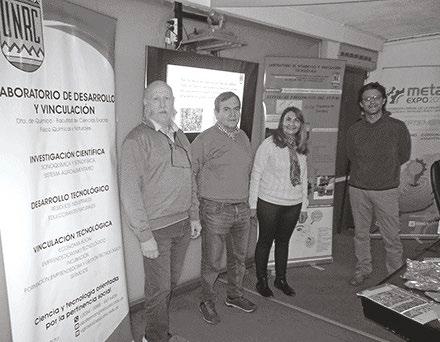


Fat-soluble vitamins (vitamins A, D, E and K), as well as other vitamins represent a group of essential micronutrients for animals because they act as enzyme precursors or coenzymes in various metabolic and immunologic processes. Therefore their presence is necessary for: facilitating a correct metabolism eliciting an adequate immunological response mantaining a normal physiologic function and in summary promoting growth, health, and welfare in animals.
However, in the case of fat-soluble vitamins, in many occasions, there is a tendency to mistakenly think that the provision of sufficient amounts in feed is not critical, as these are stored in the liver, adipose tissue and skeletal muscle, so presumably there would always be certain reserves of them in the body.
The prevalence of fat -soluble vitamins’ deficiencies in foodproducing animals due to insufficient intake or malabsortion may become a problem affecting the growth and health of the animals, as well as the quality and shelf life of the animal products.
The ban of growth promoting antibiotics in the EU in 2006, as well as drug restrictions for animal use (i.e colistin few years ago and Zinc Oxide in the pig industry in 2022) in addition to the trend of a more widespread use of vaccines, has created a scenario where food-producing animals rely much more on their own immune capacity to overcome the health challenges of intensive animal production.
Despite the fact that there are many zootechnical additives and similar products of proven efficacy developed to supplant antibiotics and medications used in the past, a greater supply of vitamins in animal diets is unavoidable today, since the vitamins are an intrinsic part of the immune response.
Furthermore, the increasing improvement in feed conversion rates, resulting from genetic selection, undeniably entails greater requirements for vitamins in feed in order to reach the maximum genetic potential of the animals.
This article presents some recent scientific works on the effect of supplementation with high levels of fat-soluble vitamins on the production of monogastric animals.
This vitamin is well known for being involved in the modulation of the immune system, as well as having a role in preserving intestinal integrity, cell division, bone development and vision related processes.
The maximum weight gain at the end of the productive cycle according to the predictive equation obtained from the cuadratic response was estimated at 3206 g (Figure 1).
Figure 1. Weight gain in chickens 1 to 42 days old, fed with a diet with varying levels of Vitamin A.
According to recent studies, Vitamin A levels of 1500 IU /kg of feed result in maximum yields for broiler chickens and layers.
Recently Savaris et al. (2021) set up a trial with Cobb chickens (500 ind.) fed during their entire production cycle (1-42 days) with varying levels of Vitamin A supplementation added to the base diet containing 8,000 UI/kg:
0 0 IU /kg of feed
3000 IU /kg of feed 6000 IU /kg of feed
12000 UI /kg of feed
24000 IU /kg of feed
The results from this study showed a cuadratic response for weight gain, resulting in a maximum response 15527 IU Vitamin A/kg from day 1 to 21, and day 21 to 42 respectively.
2996 3016 2970 vitamins
Predictive equation for weight gain (1-42d): -0.00000341 vit. A2 + 0.10331vit.A + 2,423.99964 R2: 0.68; p=0.0001 Vitamin A level with maximum response: 15,148 IU Maximum reponse: 3,206 g Source: Savaris et al. (2021)
Abd El-Hack et al. in 2016 estimated similar vitamin A levels (16000 UI/Kg of feed) in Bovans laying hens subjected to heat stress( >30ºC), leading to improvements in productive yields as shown in figure 2 y 3.
3600 3400 3200 3000 2800 2600 2400 2200 2000 1400 1350 1300 1250 1200 1150 1100 1050 1000
g 2246 1284,81b 1278,14b 1376,71a
Figure 2. Effects of vitamin A supplementation on egg mass (grams) in laying hens 42 to 54 weeks old under heat stress conditions.
0 IU vit. A / kg 8000 IU vit. A /kg 16000 IU vit. A / kg
2931 3000 IU/kg 0 IU/kg 6000 IU/kg 12000 UI/kg 24000 IU/kg 6 nutriNews November 2022 | Fat soluble vitamins a review of their levels in animal Feed
Figure 3. Effect of vitamin A supplementation on Haugh units in laying hen eggs (50 weeks of age) under heat stress conditions.
Values with a different letter have a statistical significant difference (P < 0.05)
Standarized error: 2.75
Source: Abd El-Hack at el. (2016)
This positive effect linked to high levels of Vitamin A in laying hens under heat stress and broiler chickens with high productive yields susceptible to caloric stress, is due to the the key role that Vitamin A plays in the avian immunologic system.
Positive effect of high levels of vitamin A in the lactogenic immunity of pregnant sows
High levels of vitamin A have also shown a positive effect in the immune response of pigs.

As highlighted recently by Shojadoost et al. (2021), vitamin A has antiinflamatory activity and modulates both cellular and humoral immune responses in poultry. Therefore Vitamin A is essential for the immunological functions of the mucosa, intestines and sistemically.
The importance of vitamin A in immunological function has been evidenced in multiple studies amongst which that of Yvan et al. (2014) deserves to be mentioned. These authors observed that birds which were fed with a diet containing 2.000 UI of vitamin A/kg presented a higher inmune response (antibody titers) to the Newcastle virus vaccine.
Langel at el. (2020) supplied high levels of vitamin A (30000 UI/day) to gilts sows infected with porcine epidemic diarrhea virus (PEDV) from day 76 until the end of the lactation period. They observed a reduction in the excretion titers of viral RNA and in the severity of the diahrreic condition.
In addition to the previous results, the supplementation of 3.000 UI of vitaminA had a positive effect in the litters’ survival rate (74.2% vs 55.9%).
This can be explained through lactogenic immunity. Based on the fact that gilts which received high levels of vitamin A supplementation had an increase in the number of anti (PEDV) IgA secreting cells, greater levels of IgA in prenatal serum, as well as higher IgA and B7 present in milk.
Besides modulating and stimulating the immune response, vitamin A helps to regulate intestinal stem cells, having a positive impact on intestinal growth and function. As observed by Wang et al. (2020) in piglets (Yorkshire x Landrace) x Duroc) weaned at 21 days.
In these studies various doses of vitamin A were supplied: 2 mg/kg 4 mg/kg 8 mg/kg 16 mg/kg
These were administered for a 14 day period post weaning. It was seen that a greater epithelial growth, and a significantly higher expression of maltase and sacrase was obtained with a dose of 4 mg/kg (13333 UI vitamin A/kg).
In addition to this, the authors were able to demonstrate that there is a linear response between the average daily weight gain and the supplementation of vitamin A. As well as with the weight gain:feed consumption quotient as shown in figures 4 and 5.
In other words, a higher level of vitamin A in feed represents a better use of it by the animals and greater growth.

Figure 4. Average daily weight gain in piglets (8 to 14 days post-weaning) with different levels of vitamin A in feed.
260 240 220 180 160 140 120 100 0,6 0,55 0,5 0,45 0,4 0,35 0,3 0,25 0,2
2 mg/kg (6,667 IU/kg)
Standarized error: 9.201 Linear contrast, P = 0.020 Source: Wang et al. (2020)
172,32 0,44
178,57 0,47
2 mg/kg (6,667 IU/kg)
4 mg/kg (13,333 IU/kg) 4 mg/kg (13,333 IU/kg)
Standarized error: 0.017
Linear Contrast, P = 0.005 Source: Wang et al. (2020)
209,82 0,51
8 mg/kg (26,667 IU/kg) 8 mg/kg (26,667 IU/kg)
225,89 0,56
16 mg/kg (53,333 IU/kg) 16 mg/kg (53,333 IU/kg)
Figure 5. Weight gain : feed consumption quotient in piglets (8 to 14 d post-weaning) with diferent levels of vitamin A in feed.
TARGET LOW CARBON FOOTPRINT REFORMULATION

OF THE FEED
Better use of local feedstuffs ENZYMES, AMINO ACIDS, NIR ANALYSIS, PALATANTS IMPROVE FEED EFFICIENCY
Better Feed Conversion Ratio ENZYMES, FEED PRESERVATIVES, BUTYRATE, PROBIOTICS REDUCE EXCRETION
Less emission of nitrogen and phosphorus ENZYMES, AMINO ACIDS, SODIUM SULFATE ENHANCE



Less diseased animals, less mortality
Better fertility and longevity PROBIOTICS, SELENIUM, VITAMINS, BUTYRATE, MYCOTOXINS DEACTIVATORS, AMINO ACIDS
Vitamin D3 has to go through two hydroxilations within the liver and kidney in order to acquire its 25(OH)D3 1,25(OH)2D3 forms.
The active biological metabolite is 1,25(OH)2D3. It acts in various physiological processes, including immune response modulation, regulation of bone and mineral metabolism amongst others.
D vitamins
The combined administration of 5000 UI vitamin D3 / kg and 69 mg of 25(OH)D3 /t stimulates the immune response, bone mineralization and growth in broiler chickens and layers.
Figure 6. Antibody titers for Newcastle virus in broiler chickens (21 d) fed with different levels of vitamin D3, with or without 25(OH)D3
10 9 8 7 6 5 4 3 2 1 0
The positive effect of vitamin D3 and its metabolite 25(OH)D3 in the immune response was confirmed by Vázquez et al. (2016) in broiler chickens (Ross 308) fed with 200 or 5000 UI of vitamin D3 / kg and with 0 or 69 mg de 25(OH)D3 / t from 1 to 21 days old.
On this same note the highest antibody titers against Newcastle virus were found in those birds that had received 5000 UI of vitamin D3/kg combined with 25(OH)D3, without the detection of interactions between these two forms of vitamin D as shown in Figure 6.
Vit.D3 (IU/kg) Avg 25(OH)D3 (mg/ton) Avg 200 5.77±1.0a 0 6.62±1.1y 5,000 8.46±1.1b 69 7.61±1.0x
Values with different letters are significantly different statically (p < 0.05)
Sourcee: Vazquez et al. (2016)
Similar studies carried out in laying hens by Wen et al., 2019; Chen et al., 2020; and Wang et al., 2020, showed that when these hens received levels higher than 5000 UI of vitamin D3 / kg of feed and/ or 25(OH)D3 they presented maximum responses regarding: bone mineralization quality of egg shell and productive yields
The effect seen in breeding sows’ litters when their diets are supplemented with 25(OH) D3 (50 micrograms/kg) has been the subject of various studies. Amongst which that of Thayer et al. (2019) deserves to be mentioned. They observed there was a significant rise in the number of muscle fibers in newborn piglets when the sows’ diets received a combined supplementation of 1500 UI vitamin D3 / kg and 50 micrograms of 25(OH)D3 / kg.
Very recently, Zhang et al. (2021) reported that the addition of 69 mg of 25(OH)D3 / t of feed is a highly efficient tool for reversing bone mineralization problems caused by intestinal inflammatory processes in finishing phase chickens.
Supplementation of 25(OH)D3 in diets for breeding sows has positive effects in the intestinal, bone and muscular development of their litters.
Other authors like Zhang et al., 2019, 2020, have demonstrated the positive effects on newborn piglets derived from the inclusion of 25(OH)D3 in maternal diets. Including intestinal development, intestinal absortion of Ca and P, and modulation of the intestinal microbiome. Promoting the colonization of specific bacteria like (i.e. Alloprevatela spp.) which produce short chain fatty acids that contribute to mantaining the integrity of the intestinal barrier and possess certain antiinflamatory activity.
On the other hand these same authors discovered that supplementing the diet of breeding sows with 25(OH) D3 resulted in a an improved mineralization and resistance of their own bones as well as those of their piglets. (Figures 7 and 8, respectively).
Figure 7. Effects of vitamin D3 source used in diets on the femoral and tibial resistance of breeding sows (fracture force).
8000 7000 6000 5000 4000 3000 2000 1000 0
3634b 3995a
7519b 200 vit. D3 IU/kg
Different letters in values for the same parameter idicate a statiscally significant difference (p <0.05)
Sourcee: Zhang et al. (2019)
5312b
Figure 8. Effects of vitamin D3 source used in reproductive sows’ diets on the femoral and tibial resistance of their piglets (fracture force).
795y
Tibial fracture force Femoral fracture force 50 micrograms 25OHD3/kg 920 900 880 860 840 820 800 780 760 740
873y
830x
Tibial fracture force Femoral fracture force 50 micrograms 25OHD3/kg
895x 200 vit. D3 IU/kg
Different letters for the same parameters indicate a statistical tendency (x, y, 0.05 ≤ P < 0.1)
Source: Zhang et al. (2019)
The antioxidant activity of vitamin E against free radicals and their harmful effects on cellular integrity in both normal metabolic processes and inflammatory states is widely known.
Therefore, supplementation of vitamin E at high doses in animal nutrition not only promotes health, and productive yield, but also contributes to the quality and longevity of derived products.
Under extreme thermal stress conditions, the addition of 400 UI vitamin E /kg of feed improve the productive yield of broiler chickens.
Under extreme thermal stress conditions, the addition of 400 UI vitamin E /kg of feed improve the productive yield of broiler chickens.
Eikunseiten et al. (2021) observed that by feeding broiler chickens (Ross) with 400 UI vitamin E /kg and 0.2 mg selenium/kg increased their liveweight by 11% and reduced the conversion index by 8%, compared to the addition of 300 UI vitamin E and 0.15 mg selenium /kg; during the finishing phase (Figure 9 and 10, respectively).
Figure 9. Effects of vitamin E and selenium levels in diets on liveweight of 49 day old broiler chickens under heat stress
Standarized error: 40.28
Values with different letter have a statiscally significant difference (P = 0.001)
Source: Ekunseitan et al. (2021)
Figure 10. Effects of vitamin E and selenium levels on the weight gain index of 49 day old broiler chickens under heat stress
Standarized error: 0.004
Values with different letter have a statiscally significant difference (P = 0.005)=0.001)
Source: Ekunseitan et al. (2021)
This positive effect of vitamin E in the perfomance of broilers under thermal stress conditions, has to do with its anntioxidant actvity over physiological stress and its immunomodulatory capacity. (Hridoy y et al., 2021).
With the purpose of investigating the effects of vitamin E in avian immune response, Awadin et al. (2020) supplied 200 UI vitamin E /kg in the feed of white Hy-Line chicks which were experimentally infected with avian inflenza H9N2. They discovered that such supplementation derived in a greater growth of lymphoid organs (spleen, and bursa of fabricius) as well as resulting in lower viral excretion in trachea and cloaca (Figure 11). Resulting in a greater survival rate of the chicks at 14 days of age.
Figure 11. Effects of vitamin E supplementation in viral excretion titers for avian influenza H9N2 in 14 d old white Hy-Line chicks

Laying hens have lower vitamin E requirements than that of broilers, or rearing chicks, which doesn’t mean it’s less important for their health.
Source: Awadin et al. (2019)
Liu y et al. (2019) observed that supplementing layer hens’ feed with 30 UI vitamin E / kg stimulated an immunologic response while at the same time significantly reducing mortality in birds exposed to Salmonella Enteritidis.
Ding et al. (2021), in their studies with vitamin E and laying hens, concluded that 100 UI vitamin E /kg of feed are necessary to raise the levels of antioxidant enzymes in the blood in order to reduce oxidative stress.

Increasing levels of vitamin E in animal feed generate a linear increase of its content in meat, which results in greater quality in the final product.
An important aspect of the supplementation of high leves of vitamin E in animal feed is the subsequent enrichment of these animals’ meat with the same vitamin.
Hence, besides improving the productive yield and animal health, the supplementation of broiler chicken feed with growing levels of vitamin E produces a linear increase of this vitamin within the meat (Pompeu et al, 2018). Translating itself into a qualititative improvement of the final product. (Niu et al., 2018; Vieira et al., 2020).
In a very similar way, high levels of vitamin E in pig feed improve antioxidant activity within the muscles which significantly reduces losses during cooking. (Jin et al., 2018).
The most recent investigations on the inclusion of fat soluble vitamins in animal diets, try to simulate real life scenarios and the challenges faced by the animal production industry under new conditions. Where the use of growth promoters is no longer an option, and there are ever growing restrictions on the use of other drugs. It is through these studies that the beneficial effects in productive yield and animal health linked to the inclusion of high levels of vitamin in diets have come to light. Demonstrating that this positive impact can also be translated into the final products.
For such reasons, even genetic companies have updated their recommendations with higher inclusion levels of fat soluble vitamins as shown for example in table 1 for chicks, and breeding hens.
With the constant technologic breakthroughs and legislative changes that occur within the fields of animal production and nutrition, the need for a detailed revision of the adequate levels of fat soluble vitamins in premixes and feed is unquestionable.
Table 1. Specifications for fat soluble vitamins for chicks and breeding hens Ross 308 in 2018 and 2021
Bird age
From 0 days to 5% of production
From 5% of production to more than 351 days Year
Vitamin Units 2018 2021 2018 2021
A IU 11000 13000 12000 15000
D IU 3500 4000 3500 5000
E IU 100 100 100 130
K mg 3 6 5 9
Source: Ross 308 Nutrition Specifications Parent stock 2018, c 2018 Aviagen
If you’re interested in any of the mentioned bibliographic references contact the author: alfred. blanch@addimus.com
Fat soluble vitamins a review of their levels in animal feed
DOWNLOAD IN PDF


Sweet potato (Ipomoea batatas), commonly called sweet potato (from Taino), camote (from nahuatl camohtli) or boniato, is a plant of the Convolvulaceae family, cultivated in much of the world for its edible tuberous root. Unlike the potato sweet potato is not a tuber, it is a reserve root.
Sweet potato is versatile and its genotypes can be selected to meet the needs of a particular use.
The tips of the foliage are an important protein resource although they are not used very often.
Sweet potato storage roots are consumed directly as food.

In the tropics, edible roots are not stored for long periods due to the indeterminate growth of sweet potatoes and the fact that multiple planting allows harvesting of reserve roots for most of the year.

The People’s Republic of China produces about 75% of the world’s sweet potato production. Making it the country’s second after rice.
In general, sweet potato is an important food crop in many tropical countries. In the United States it is produced for consumption as a vegetable supplement and in many regions it is strictly associated with religious holidays.



Both the roots and foliage serve as animal feed
Feed material according to Reg. (EU) No. 68/2013
Catalogue of feed materials (Tubers of Ipomoea sweet potatoes regardless of their presentation), inscribed in the latter under number 4.9.1.
Mandatory compliance declarations “Humidity when < 75% or > 80%”.
It complies with Royal Decree 465/2003 and subsequent modifications, on undesirable substances in animal feed.
Roots can also be used as a starch resource and for fermentation products such as: wine, ethanol, lactic acid, acetone and butanol.
potato (ipomoea batatas): an alternative within raw materials
It is native to the South American tropical region and its cultivation was widespread throughout the Antilles since ancient times.
It seems that Spanish navigators took sweet potato to the Philippines and the Moluccas, from where the Portuguese then took it to India, China and Japan.
THE IDEAL CONDITIONS FOR ITS CULTIVATION ARE:
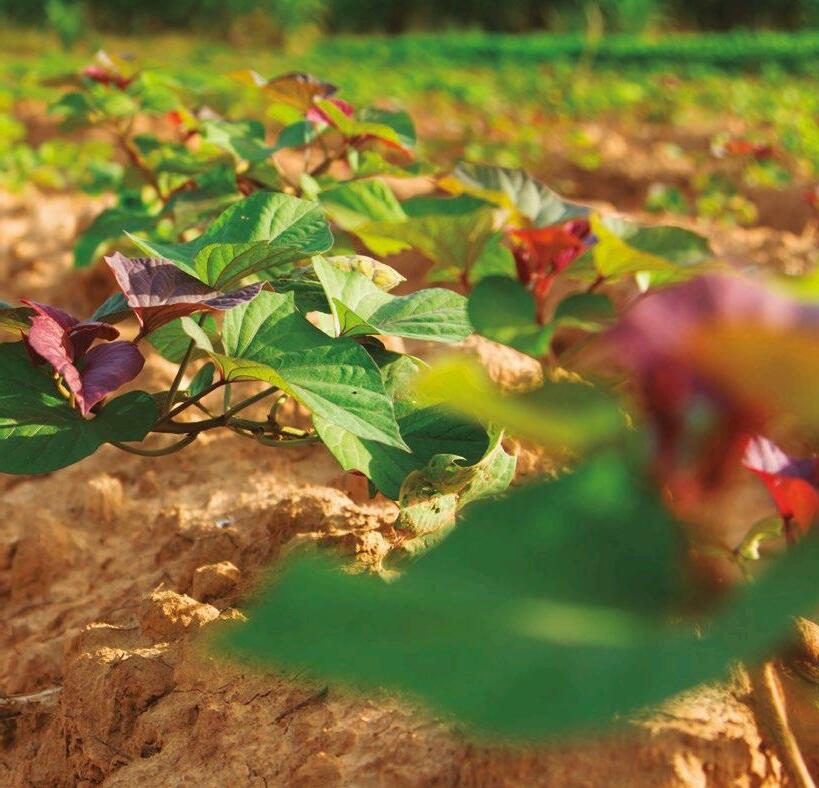
TEMPERATURE. An average temperature above 21º C, a humid environment (80-85% RH) and good luminosity during its growth period.
The minimum growth temperature is 12º C. It withstands heat well.
WIND. It tolerates strong winds due to its creeping bearing and the flexibility of its stems.
SOIL. Sweet potato adapts to soils with different physical characteristics. Although it develops better in sandy soils, it can also be grown in those with more clay. Soils with coarse texture, loose, crumbly, granulated and with good drainage, are the most suitable. The ideal texture is loam-sandy, together with a granular structure of the soil. It tolerates moderately acidic soils, with a pH between 4.5 to 7.5. Where a pH of 6 is optimal.
Reproduction by means of seeds is hardly practiced since its flowers bear fruit poorly and the grains are late in developing the whole plant. It does not guarantee quality plants and it is only used in Genetic Improvement to obtain new varieties.
Multiplication by tubers or roots gives a very good production and it is carried out when there are not enough branches.
Sweet potato is a high energy food
Its roots have a total carbohydrate content of 25-30%. From which 98% is considered as easily digestible.
It is an excellent source of provitamin A carotenoids. However, it varies between different types and cultivars in the range between 0 and 8000 IU/100 g.
It is a source of vitamin C (20-30 mg/100 g), potassium (200-300 mg/100 g), iron (0.8 mg/100 g), and calcium (11 mg/100g).
The protein content content is low Ranging from 2.5 and 7.5% of the dry weight depending on the genotype. Its amino acid composition is relatively well balanced, with a higher percentage of lysine compared to that of rice or wheat, but it has a somewhat limited leucine content.

Dry Matter
% as is 70.0 3.6
Crude protein %DM 5.5 1.4 3.3
Crude fiber %DM 3.8 0.7 2.8
NDF %DM 11.3 2.3 8.8
ADF
Lignin
Ether extract
Ash
%DM 5.2 1.2 3.6
%DM 1.1 1.1 2.1
%DM 1.1 1.1 0.7
%DM 3.6 0.7 2.8
Starch %DM 69.3 62.9
7.5

Due to its physical structure and the fact that the root is only used when split, it cannot be used in feed mills. Therefore its use is more widespread in ruminants than other species.
Its high starch content added to soluble sugars is above 70%, making it a typical energetic raw material with a similar behavior to that of cereals.
Sweet potato starch is composed mostly of amylopectin (60-70%) which is easily digestible in all species. Due to this, it is important to pay special attention to rumen acidosis problems.

Although ruminants have great adaptability to diets of high energy concentration, the success of supplementation depends on the progressive adaptation of the rumen.
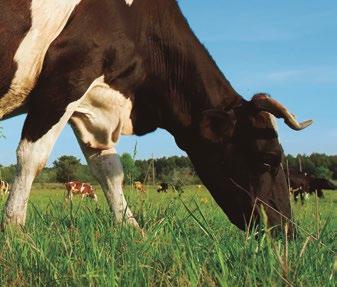
It is convenient to start with low amounts per animal and increase until the goal is reached.
Example: Target: 4 kg/individual. Start with: 500 grams/ind for 2 days, continue with 1 kg/ ind for 3 days, and increase 1 kg every 3 days until reaching the level of 4 kg/individual.
Being a raw material that is not used in feed mills, its use in monogastrics is reduced to animals fed directly in the field “pigs in the wild”.

In table 2 there is a small revision on levels of inclusion and different ages where it has no restrictions. The only disadvantage is its low protein content.
Table 2. Use of sweet potato in pigs
In free-range chickens, good results have been obtained with inclusions up to 20%.

Original raw material
Growing pigs 50% substituting corn
Boiled Growth 60% of the diet
Silage (Sweet Potato Diet)+ 10% DDGS + 20% Wheat) Weaning
No effect compared to control diet Chicco et al; 1976
Increased DM consumption, good health status Gonzalez et al; 2002
Improved avg daily weight gain
Liu ZuoHua et al; 2001

Sweet potato is an excellent source of starch and therefore energy. Its only disadvantage is that it can’t be used in feed mills. However it is a good alternative for direct feeding in all species. It is important to remember that it has low protein levels.
Sweet potato (ipomoea batatas): an alternative within raw materials
DOWNLOAD PDF
As all raw materials with high levels of humidity, require certain storage precautions in order to avoid contamination. It is easily silaged as long as the precaution of not leaving air pockets is taken. If it is not ensiled it is convenient to store it as shortly as possible.
Biochem‘s global feeding team can help you improve the health and performance of your animals. We offer solutions for every animal species, every production segment, and every climate zone.


Ángel Medina, Full time Professor and researcher is part of the Applied Mycology Group at Cranfield University (United Kingdom). His studies focus on the impact of environmental stress on the functioning of fungi, the mechanisms involved in ecophysiological tolerance and the molecular basis of secondary metabolite production. Especially that of mycotoxins and other relevant metabolites for industrial applications.
You have a PhD in microbiology from the University of Valencia and are currently carrying out your research within the applied mycology research group at Cranfield University. What led you to become interested in this field of research?
I did my PhD in Valencia under the direction of Prof. Misericordia Jiménez. At the time, the presence of ochratoxin A in wine and beer was known but the responsible fungi were not as apparent.
Therefore, most of my PhD was about the discovery of the fungi that produce mycotoxins in grapes or barley.

However, I found the publications of Prof. Naresh Magan (Cranfield University) to be very interesting. Where he shows that no matter what a fungus can do, it is a matter of controlling the environment in which it lives.
After thousands of fungi plates and characterizing fungi using different techniques, the concept of “fungi ecology” became very appealing to me.
I applied for a stay at Cranfield in my final year of PhD and that was it… I knew from the beginning that I wanted to go back. And here I am.
Could yo tell us about the main lines of research or the most interesting ones you are carrying out?
One of the most interesting things about working at Cranfield is that I work directly, or am involved, on many different projects on different topics. We examine the benefits and dangers. From all this, I would say that in the last 5 years my research has focused on:
Ecophysiology of fungal species, mainly those that produce mycotoxins, and the effects that environmental factors predicted by climate change may have on mycotoxigenic fungi
High-performance techniques to accelerate ecophysiological studies
The development of early forms of fungal detection or fungal activity.
mycotoxigenic fungi and their adaptations to climate
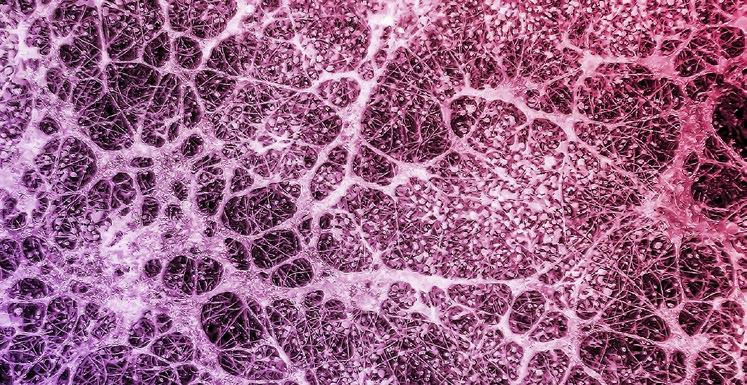
You have focused on the ecophysiology of mycotoxigenic fungi. What does this concept consist of and what information does it provide us?
For me, ecophysiology is a primary aspect when it comes to mycotoxigenic fungi. The first rule when you want to win a “war” is to know your enemy.
This is what understanding the ecophysiology of a fungus resembles.
You get to know in what conditions they will grow or not, if they will produce toxins or not, and whether they will reproduce or not, amongst other aspects.
We can use this information to prepare for each of the “little battles” fought when trying to minimize mycotoxins across the food chain .
What are the enviornmental factors that most influence the development of mycotoxigenic fungi and the production of mycotoxins?
I may be a bit biased! But so far, the ones I’ve found have the most effect are water activity and temperature.
Right now, we are conducting a lot of research in relation to rising CO2 levels, as we think it could be very important in terms of Climate Change.
Temperature, pH and water activity have a major influence on these fungi’s life cycle right? Are these factors independent or can the variation of one of them influence the effects of the others? Could you give an example of such phenomenon with a specific mycotoxigenic fungus?
Our research at Cranfield is known by other colleagues as we are one of the few groups trying to combine 3 environmental factors simultaneously in some experiments.
In this case, in our experiments with Aspergillus flavus we have combined:
CO2 x2-3 AFB1
What we have observed is that, by increasing the level of CO2 2 or 3 times above current concentrations (levels that are not toxic to fungi), something happens at the molecular level in such a way that the amount of aflatoxin B1 produced increases considerably.
Our tests revealed that there is an interaction between these parameters and that the changes cannot be explained by individual or a pair of changes alone.
In other cases, such as with some Fusarium spp., we have observed that by adding CO2 in the mixture, there is an extension of the water activity and temperature range in which the fungus can grow.
Thus, the fungus can grow at higher temperatures and in drier conditions.
Climate change is a pressing global concern. How are mycotoxigenic fungi being affected by this phenomenon?
I believe that nature in general is being affected by these tremendous changes.
One of the most significant changes, and surely everyone has felt it, is temperature fluctuation.
I remember when I was a kid I would run around on my birthday in November in a very thick jacket. This does not happen anymore in my hometown, Carcaixent (Valencia – Spain). Where even in some years people wear t-shirts until midDecember.
Another thing that has changed a lot is the way in which it rains. Therefore, due to climate change, what is changing the most are those same factors that will affect fungi. Which are the ones I mentioned earlier: temperature and water availability.
Remember that survival is the main impulse of all living organisms, and fungi are no exception to the rule. In order to survive they will move towards “better places with better living conditions.” However, when it comes to humans and as far as our food security is concerned, this represents a great risk.
Therefore, it is better that we prepare ourselves.
Has there been a variation in the ocurrence of mycotoxigenic fungi in relation to climate change? Which ones should concern us the most for the future?
Currently available studies suggest that several things will change. However, looking at the different mycotoxigenic fungi, both in Europe and in other areas of the world, I think Aspergillus flavus and aflatoxins are a big concern.

This is due to the fact that this “guy” is a tough “guy”. It can survive in very bad conditions during winter, and is capable of thriving under very restrictive conditions (high temperature and low water availability.) Conditions where other fungi or microorganisms cannot grow, and this means they have no competition.
Considering the increase in temperature and drought problems, decreased rainfall, etc., it can be quickly understood that these environmental fluctuations create ideal conditions for this fungus to prevail over others. Allowing it to spread to different areas where it was not a major concern before or could not even grow.
In itself, this won’t be a problem, but A. flavus comes with the added potential problem of producing mycotoxins under those conditions and I think it’s worth remembering that aflatoxin B1 is the most potent mycotoxin and a clear carcinogen for humans.
Within your scope and lines of research, you have analyzed the gene expression of different strains of mycotoxigenic fungi. Have these studies revealed significant changes? Have any remarkable epigenetic effects been observed related to air composition, environmental pollution or pesticide use? Have you found concrete examples of these types of changes?
Yes, of course! We always try to find the reasons behind mycotoxin changes, by investigating what happens to genes in the biosynthetic pathways of toxins.
This is what we call “molecular ecology”. It has helped us to have a better understanding of how fungi adapt to specific environmental conditions and why they change the amount of toxin they produce.
In the research that our group has carried out in the last 15 years we have highlighted that environmental conditions are capable of modifying the expression of these genes and therefore modifying the amount of toxins produced.
We have described for different fungi, that mild stress sometimes enhances the expression of some genes that lead to an increase in the accumulation of mycotoxins.
In fact, most mycotoxigenic fungi have maximum mycotoxin production under conditions that are just slightly different from their optimal growing conditions.
This shows that mild stress increases the production of mycotoxins.
As mentioned above, most of these experiments have always considered one or two factors and their potential interactions.
In our most recent studies, as aforementioned, we have been evaluating three factors simultaneously adding CO2 in our climate change experiments. We have seen clear interactions that in some cases lead to a sudden increase in the production of toxins.
Could we say that mycotoxigenic fungi are adapting to climate change at a faster rate than other plant species of interest for animal feed?
Well, microorganisms generally have greater adaptability than other living organisms because their life cycle is short and therefore they replicate many more times in the same period of time.
However, I do not think we have seen major modifications derived from genetic modifications in a very short period of time, as this will happen more in the long term.
What we are seeing is the movement of species and pathogens to areas where they were not found before.
Some plants will be exposed to these new pathogens and may not be ready. Our agricultural practices might not minimize the development of these pathogens, so we wouldn’t be prepared either.
I believe that, at the moment, there are many “known unknowns” and a lot of research is needed to fill these knowledge gaps. Which in turn will help us develop more resilient practices, that make agriculture and food supply chains more sustainable in the long term.
Storage conditions of raw materials are very important to avoid the production of mycotoxins. Which parameters are essential to be monitored in this regard?


This question is closely related to the research we have been developing at Cranfield for the European project MyToolBox.
Therefore, we decided to look for options to improve detection. After examining different alternatives, we decided to study whether CO2 levels linked to temperature and humidity could be a good indicator of fungal activity.
At a certain level of temperature and humidity, the grain continues to breathe at a specific rate.
At Cranfield we have been working on developing an improved decision support system for those that are responsible for silo storage.
Currently, silos are monitored with temperature and humidity sensors.
However, from our experience and our talks with industry members, once you have an alert it means that the situation is already bad enough and losses can be significant.
Silos are semi-closed systems and if there is a disturbance in the system in terms of water, temperature or fungal contamination, the respiration of the grain and that of the fungi which grow, will vary from the normal pattern in specific silos.
The specific location can also be identified.
Our results in in vitro experiments and in small silos with 2 tons of wheat or corn (in collaboration with Michelle Suman de Barilla in Italy) have shown that we can set fungal deterioration alerts before systems based solely on temperature and humidity do. This will allow those responsible for the silos to take corrective action earlier, reducing waste and improving the quality of grains regardless of their final destination. Whether that is for food, or animal feed.
At the same time, this contributes to the reduction of mycotoxin production as silo conditions can be restored to conditions where fungal growth and mycotoxin production are not possible.
From your experience, are there other mycotoxins that should be included in the analyses being carried out currently, which have not been previously contemplated?
That is the “million dollar” question for many.
At Cranfield we are in close contact with companies and most of the things we do are in collaboration with them.
Therefore, we are aware of the limitations and problems that mycotoxin analyses pose to them.
On the other hand, we focus on consumers, both human and animals. Which we want to keep healthy.
It is a compromise between what we have in food and animal feed, and its effects.
It’s very difficult to answer such question. However, I would like to highlight something about this matter.
Legislation is now based on specific relationships between food/feed and mycotoxins, which is based on current toxicological and occurrence data.
Our research and some trends that we have observed in research papers, indicate that trends in mycotoxigenic fungi and mycotoxins are changing.
For example, we are starting to have problems with aflatoxins in areas and in crops where they were not a problem before.
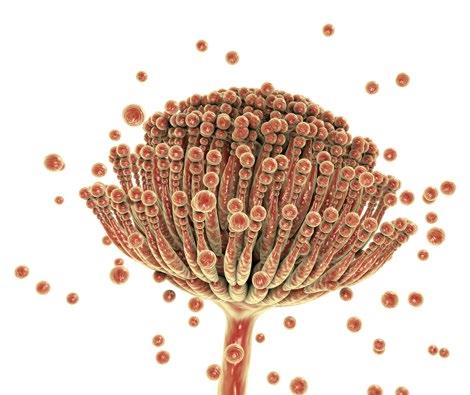
I think this is a very good reflection that should be made by everyone who works in this field. As it could tell us which mycotoxins we will have to analyse in the future.

What advice or final takeaways would you give to our readers in regard to mycotoxin control in feed materials? AND,
Interview with Angel Medina, Inquiring about mycotoxigenic fungi and their adaptations to climate change.
DOWNLOAD IT ON PDF
I feel the pressure of the final question now!
I think the best advice I can give to everyone who reads me is to keep an open mind.
The way we grow and produce food and feed will be greatly affected in the coming years due to climate change.
In fact, we are already noticing these changes in some areas and regions of the world. Therefore, we need to be prepared for unprecedented mycotoxigenic challenges in areas where there were no problems before.
Don’t think “this is none of my business”, “we’ve never had this problem before”, because it may be close to knocking on your own door and you need to be prepared, so, say “hello!”
Will legislation be able to cope with these changes in time?
Will legislation be able to cope with possible changes in the mycotoxins produced?
PREVENTION IS THE BEST STRATEGY!C M Y CM MY CY CMY K


Enhancing the intestinal health of pigs has become a priority for the pig sector. It allows to improve productive performance, minimize production costs and achieve high levels of Animal Welfare that are accepted by society.
In recent years, the number of studies and references to what is known as “Intestinal Health” have increased significantly.
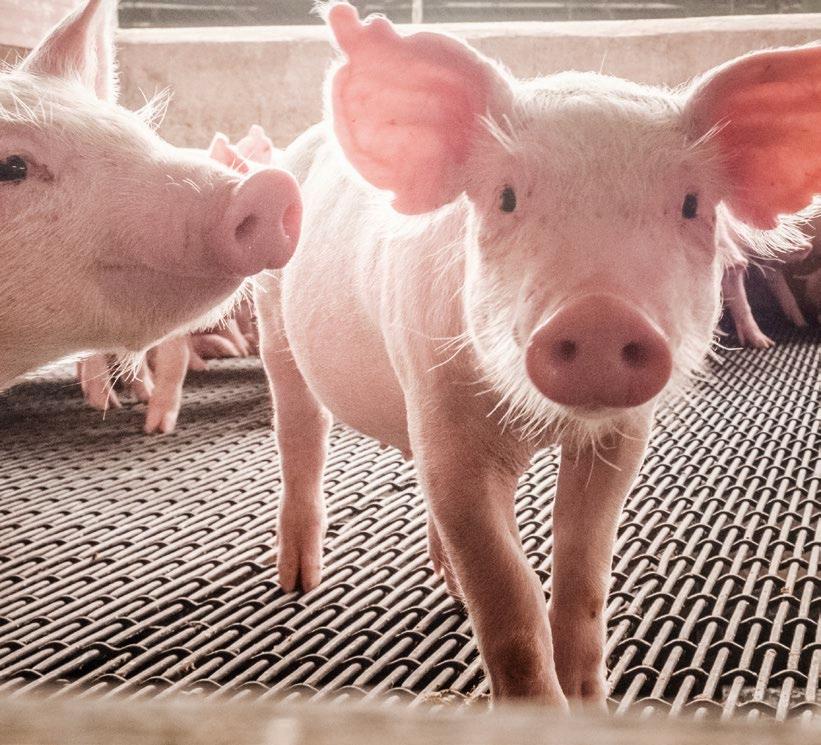
The definition of Gut Health will depend on who is asked to define it and what circumstance or factors are being refered to:
If it is believed that the best intestinal health is found in nature, in wild animals, this will depend on the moment chosen to make such determination. Since it can be evaluated at a time of abundance of food, such as autumn in the Extremadura pasture for Iberian pigs, or during the icy winter with snow and few resources in the Arctic tundra for the few wild boars that live there at that time.
If veterinarians are asked about the topic, it is most likely that they will refer to “the absence of digestive pathologies that hinder the development of the animal of interest”. Which in this case is the piglet.
On the other hand, nutritionists will say that intestinal health refers to that state of the animal in which digestive functions develop with complete normality. However, it is important to define what normality is.
Scientists will answer that they don’t know yet, and that more studies and trials are needed
For technicians in animal production, Pietro Celi’s definition can be adopted: “A steady state where the microbiome and intestinal tract coexist in symbiotic equilibrium, and where animal welfare and performance are not limited by intestinal dysfunction.”
Bischoff proposes 5 criteria for measuring gut health:
Effective digestion and absorption of nutrients, water and minerals. Regular bowel movements, normal transit time and no abdominal pain.
Normal consistency of stool and absence of nausea, vomiting, diarrhea, constipation and bloating.
Absence of diseases in the gastrointestinal (GI) tract,” without stomach diseases, such as ulcerations, carbohydrate intolerances or enzyme deficiencies.
Normal and stable microbial flora, without abnormal growths of some bacterial species over others and without diarrhea associated with infection or parasites.
An effective immune state, with an effective function of the gastrointestinal barrier:
Effective and normal production of mucus, without bacterial translocations.
Normal IgA levels.
Immunological tolerance and normal activity of immune cells with absence of mucosal hypersensitivity.
A state of well-being difficult to identify in production animals but that can be measured with normal serotonin levels and in the absence of stress markers.

Nutrient and fluid absortion
intestinal health

Malnourishment prevention
Immune tolerance





Allergy and intolerance prevention

Defense

infections Brain signaling (Serotonin, etc.)

Energetic homeostasis and mood regulation Infection prevention
Figure 1. The gastrointestinal tract contributes to health by ensuring digestion and absorption of nutrients, minerals and fluids thanks to several mechanisms, such as mucosal induction and systemic tolerance, the presence of defense systems against infections and other pathogens, and signaling from the periphery to the brain.
The function of the intestine is not limited to the processing of food and subsequent absorption of nutrients and fluids:

Animal experiments and human data have shown that through its enzymatic capacity, the gut is able to communicate with bacteria that support digestion.
The gut informs the brain, through the vagus nerve and certain hormones, about energy absorption and other conditions that can affect mood and overall well-being
The intestine induces self-tolerance of the immune system, while establishing an immune defense against external aggressions of organisms transported with food.
Celi states that there are 6 components that must be taken into account and studied to define intestinal health. All being similar to those that Bischoff takes into account
with the only exception of incorporating the diet which tends to be more manipulated and directed than in human intestinal health.
Diet, considering macro and micronutrients, production boosting additives, anti-nutritional factors and undigestible fractions of the different ingredients
Stable and efficient microflora, without overgrowth

Effective digestion and absortion
Intact intestinal mucosa with its mucous layer, epithelium and associated lymphoid tissue
Motor and neuroendocrine intestinal functions

M. Varley, in 2017 (comment in Pig Progress), defined that for an animal to have good intestinal health it is necessary that a high correlation between general health and intestinal health exists. Which implies that:
Its weight gain from 30 kg to slaughterhouse is optimal
The number of days with antibiotic treatment is low or zero
The score of lung lesions in slaughterhouse is zero
The level of acute-phase protein which measures stress or inflammation at different times within the productive life is at a normal level
However, this type of evaluation must associate another series of values that measure the different components of intestinal health.
Measuring gut health with in vivo techniques requires sophisticated methods, special facilities and specialized surgical technicians, making it impractical on a practical level.
To measure intestinal health, the use of biomarkers has been proposed, which are substances that can be used as biological indicators.
Biomarkers must be able to be objectively measured and be indicators of normal biological processes, pathological states or responses to pharmacological treatments.
The development of biomarkers for gastrointestinal functionality is crucial to advance in the understanding of events affecting the intestinal barrier, its functionality and the ecology of the gastrointestinal microbiota.
As of present, there is a good knowledge of the digestive system and the mechanisms of absorption of the main macro and micronutrients. However, there is a large gap in research related to biomarkers of gastrointestinal permeability, gastrointestinal barrier function, biomarkers for the intestinal endocrine system, and biomarkers that are indicative of the functional presence of beneficial microbiota or its metabolites.
Piglet intestinal health DOWNLOAD ON PDF

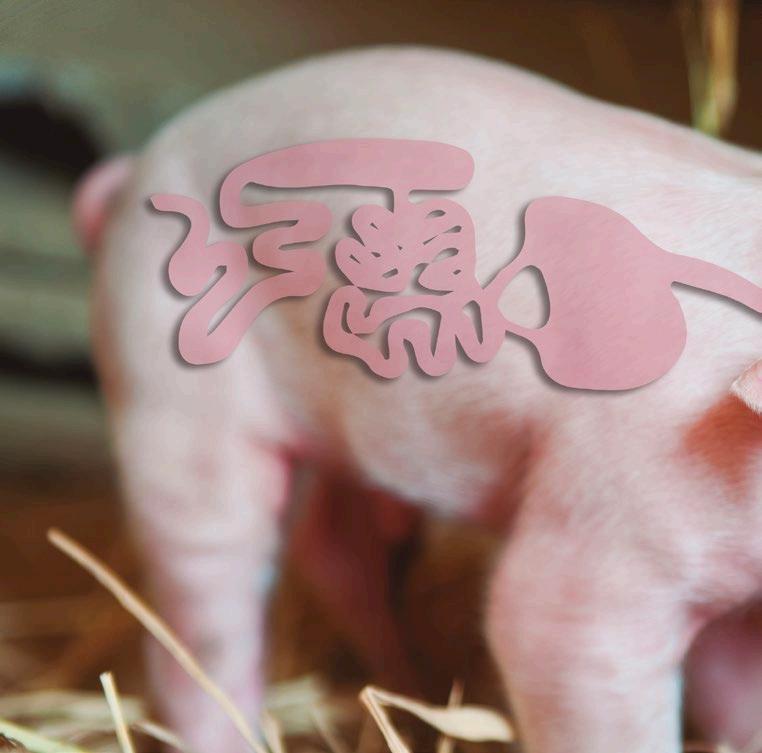
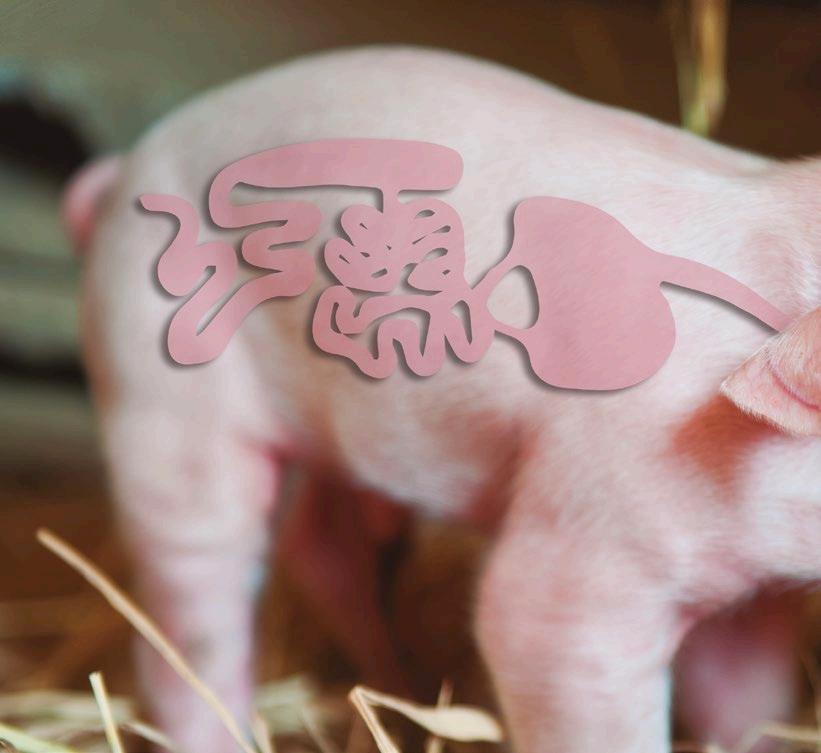 J.R. Pluske, M. O’Dea & S. Abraham School of Veterinary and Life Sciences, Murdoch University Murdoch WA 6150, AUSTRALIA
J.R. Pluske, M. O’Dea & S. Abraham School of Veterinary and Life Sciences, Murdoch University Murdoch WA 6150, AUSTRALIA
Gut health and maintaining optimal structure and function of the gastrointestinal(GI) tract is necessary to achieve sustainable and costeffective pig production.
The gastrointestinal tract is responsible for regulating physiological homeostasis that provides the pig with the ability to cope with infectious (e.g., enteric pathogens) and non-infectious (e.g., production stressors) challenges.
‘Gut health’ is a commonly used term that attracts a lot of attention, although a clear definition of this expression seems to be missing. However, generally speaking, according to Pluske et al. 2018:
‘Gut health’ encompasses a number of physiological and functional characteristics including: digestion and absortion of nutrients. metabolism and energy generation a stable and appropriate microbiota / microbiome defense mechanisms including barrier function and immune mechanisms of the mucosa and interactions between these components
Due to the profound changes in (GI) tract structure and function associated with the post-weaning transition, “gut health” in piglets is of great interest for pig production.

| “Gut health” and antimicrobial resistance
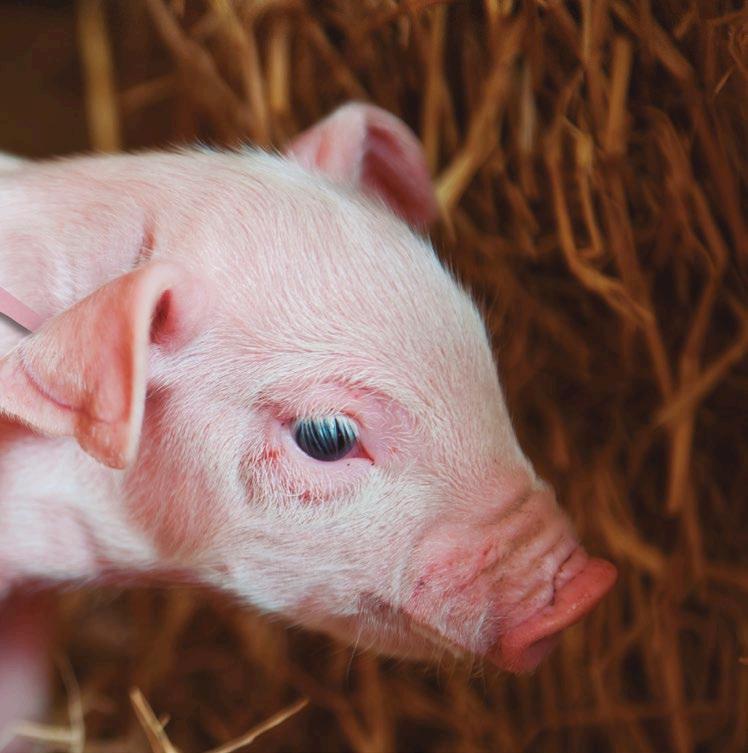
What does the term ‘gut health’ mean?
The inclusion of antimicrobial compounds in diets and (or) in the water, kills microbes or inhibits their growth. Helping piglets during this period of change, and reducing the impacts of growth control after weaning.
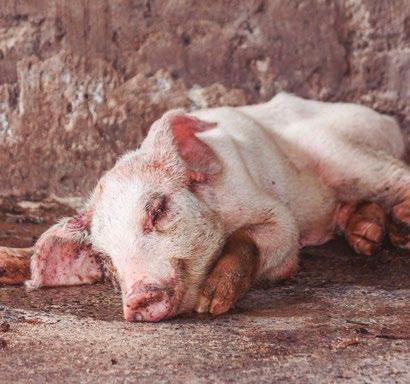
However, the need to implement different feeding strategies and (or) include feed additives (e.g. Pew Charitable Trusts, 2017) due to bans/ reductions in the use of certain antimicrobial compounds in some parts of the world have placed greater emphasis on the ‘healthy gut‘ concept.
A deterioration in the pig’s intestinal health due to the presence of enteric diseases after weaning can be directly related to a decline in the animal’s overall health. Although some direct relationships may be established between the performance and efficiency of the pig and a “healthy” GI tract, sometimes this connection is more subtle and less obvious. Especially in the absence of evident enteric diseases (Pluske et al., 2018).
One of the keys to understanding ‘gut health’ is the microbiota, i.e. the ecological community of commensal microorganisms, symbiotics and pathogens that inhabit the gastrointestinal (GI) tract.
It should be noted that, as a synonym, microbiome describes the collective genomes of microorganisms that reside in the GI tract or the microorganisms themselves.

Although the term microbiome technically refers to the population of bacteria, yeasts, fungi, viruses, and protozoa within an ecosystem, the term is often widely used only to refer to bacterial composition.
However, appropriate terminology when exploring bacterial population is microbiome or bacterial microbiota.
The sweeping of the bacterial microbiome in pigs and their complex interactions with the host and external environment (e.g., through diet or through the environment) is a relatively new phenomenon. Which is largely driven by the increasing availability and lower cost of new genomic sequencing technologies.
A growing number of studies suggest that there is a “central” porcine bacterial micrbiome, which could be used as a reference for a “healthy” GI tract population.

Research on the GI tract microbiota of pigs has a new and more urgent perspective due to the previously mentioned bans/ reductions on antimicrobial compound use for pig production. This highlights the need of mantaining a healthy GI microbiota in key fields of interest with various stressors and infectious diseases (Brüssow, 2017).
However, some antimicrobial compounds are still allowed in some countries around the world. Which has created a parallel area of interest (and concern) regarding the ability of numerous members of the GI tract microbiota of exhibiting resistance against some antimicrobial compounds. Especially against antibiotics known as (CIAs), critically important antibiotics – which are also used in human medicine.

Antimicrobial resistance (AMR) has been described as one of the greatest longterm threats to human health (Viens and Littmann, 2015), and, indeed, to animal health and production.
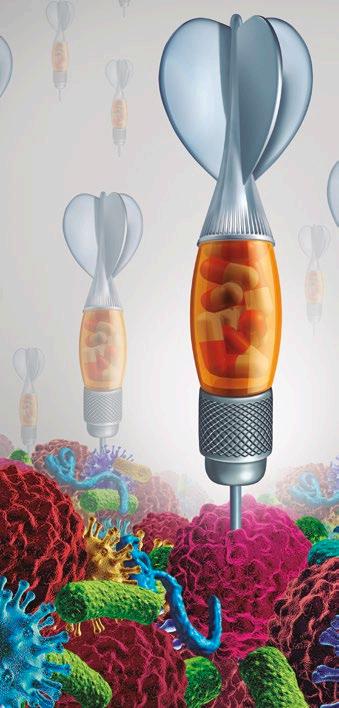
In September 2016, and for the fourth time in its history, the United Nations General Assembly met to discuss a considered global health issue, committing to “comprehensive and coordinated approach to addressing the causes of AMR in multiple sectors, especially in human and animal health and agriculture.”(WHO, 2016).
As described in 2016 by the European Commission, antimicrobial resistance is an evolutionary phenomenon that occurs naturally over time but is accelerated by: inappropriate use of antimicrobial medicines in the health, animal, food, agriculture and aquaculture sectors
lack of access to health services, including diagnostics and laboratory capacity
and exposure to antimicrobial residues in soil, crops and water
Most AMRs of human medical importance are associated with the use of antimicrobials in the human population. However, resistance in foodborne zoonotic pathogens such as Salmonella spp. and Campylobacter spp., and commensal bacteria from livestock such as Escherichia coli and Enterococcus spp., are under an increasing verification worldwide.
What is antimicrobial resistance (AMR) and what does it entail?
This is mainly due to the current dependance on the same drugs both for human medicine and for the treatment and control of bacterial diseases in livestock. Especially that of pigs, chicken and cattle.
However, it is also related to: historical use of some classes of antimicrobials (used in both humans and livestock) at subtherapeutic levels to promote animal growth (the socalled ‘antibiotic growth promoters’ or AGPs) and the prophylactic (or metaprophylactic) use of antimicrobials in food or water to prevent infections in animal groups.
In addition, the development of multidrug resistance in pathogens such as enterotoxigenic E. coli may result in the unapproved use of critically important antibiotics (CIAs) such as broad-spectrum cephalosporins (e.g., third-generation cephalosporins) (Abraham et al. 2017, 2018).
Most of the resistance to CIAs is encoded in mobile genetic elements such as plasmids and integrative conjugative elements. This can easily cause the transfer of these genese between bacterial species and between humans and animals. In addition, critically important AMR can be linked to a minor AMR through a process known as co-selection. (Mukerji et al 2017).
This co-selection phenomenon is particularly important for livestock industries where the transmission of resistance genes to CIAs can be combined with resistance to first-line antimicrobials. It can even extend itself to standard food additives such as zinc and copper when they are used at supraphysiological levels.
Therefore, in certain situations, the standard use of feed additives and first-line therapies can promote the proliferation of CIA-resistant bacteria. (Mukerji et al 2017).
In this context, as several authors have already pointed out (Wegener, 2003; Marshall and Levy 2011, Mukerji et al 2017) pigs constitute a potential reservoir of AMR which can be transferred to pathogenic bacteria in humans through:
the food chain direct contact with pigs and (or) the contamination of the enviornment with pig manure
As a consequence of such situation, numerous programs and interventions have been implemented around the world to try to address this problem.
However, data and information related to antimicrobial resistance in pigs and their potential contribution to the broader issue may:
Be inconsistent Vary between countries Be difficult to predict
A recent study in Denmark (Birkegård et al., 2017) quantified the relationship between lifetime exposure to antimicrobials and seven AMR genes in Danish pig farms.
AMR gene levels were quantified by qPCR in faecal samples obtained from 681 batches of slaughter pigs.
The study showed that the effect of antimicrobial exposure on AMR gene levels was complex and unique to each individual gene.
Several classes of antimicrobials had positive and negative correlations with the AMR genes.
Tetracycline
Number of places Macrolid
Slow release penicillin Lincomycin Aminoglycoside
Pleuromutilin
Simple penicillin
ermB ermF sulI sulII tet (M) tet (O) tet (W)
Other age groups
Finalization number
Fig. 1 Association between antimicrobial exposure and antimicrobial resistance genes. Association map showing the effect of antimicrobial exposure variables and other factors on levels of antimicrobial resistance genes. The figure is a summary of the effect of the class of antimicrobials and other variables included in the final regression analysis. The dotted blue line indicates a negative correlation and the continuous red line indicates a positive correlation. Adapted from Birkegård, A.C., Halasa, T., Græsbøll, K., Clasen, J., Folkesson, A. and Toft, N. (2017). Association between selected antimicrobial resistance genes and antimicrobial exposure in Danish pig farms. Scientific Reports 7: 9683 (2017) doi:10.1038/
In this study, only 10-42% of the variation in AMR gene levels could be explained by factors included in the statistical analysis.
One possible reason for this could be that there are non-antimicrobial risk factors that are known to affect AMR levels, but were not included in this study because no information could be obtained from available registries.
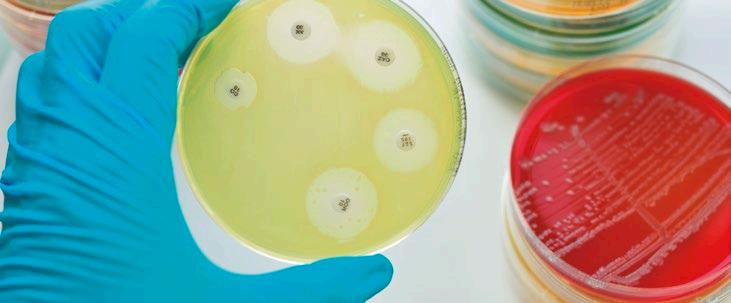
These include transportation, shed temperature, farm management, and meal consumption. In addition, the bacterial composition of the pig gut and feeding strategies also affect the levels of AMR genes because many bacteria intrinsically carry AMR genes.
In conclusion, these associations were found to be more complex than previously described and depended on both the specific AMR genes and the classes of antimicrobials in question. In addition, the results indicate that exposure to antimicrobials is not the only important determinant of AMR gene levels.
Clearly, and according to the literature and what is stated in it, numerous influences in addition to exposure to antimicrobials, contribute to AMR in pigs.
Incomplete understanding of selective resistance pressure in livestock, rates of AMR transmission between animals and people, and management practices, which aid or hinder the emergence and persistence of resistance in farms, have made it difficult to assess the risk posed by the use of antimicrobials in livestock and to make an accurate prediction (Rosengren et al., 2010).
Part of the work being carried out at Murdoch University on AMR includes the use and resistance emergence to broad spectrum cephalosporins in pig production in Australia.
There is currently a high incidence of AMR in CIAs in bacteria that cause serious human infections worldwide, including, according to WHO (2017) broad-spectrum cephalosporins (CS) fluoroquinolones (FQ) carbapenems colistin.
Since the first report of CS-resistant E. coli and Salmonella serovars in food-producing animals was related to the use of CS in livestock, this has triggered a public health alarm related to the direct transfer of resistant bacteria or the potential plasmidmediated resistance transfer to humans (Allen y Poppe 2002).
A recent study from Murdoch University (Abraham et al., 2018) investigated the ecology, epidemiology, and characteristics of the CS-resistant E. coli plasmid in healthy pigs over a four-year period (2013-2016) after the withdrawal of this antibiotic.
Ceftiofur and cefquinome, are thirdgeneration cephalosporins which are registered worldwide primarily for the treatment of respiratory infections in farm animals, including pigs.
”It has been previously argued that the overuse or misuse of these broad spectrum cephalosporins has led to the emergence of a resistant Enterobacteriaceae resevoir. Which includes E. coli and Salmonella enterica in livestock around the world.
B
pCTXM1-MU2
island
B
Fig. 2 Genomic map of the pCTXM1-MU2 plasmid carried by broad-spectrum cephalosporin-resistant (ESC) strains of E. coli belonging to multiple E. coli lineages in an Australian pig farm after voluntary elimination of ceftiofur. The positions of gene classes are indicated by color; A – The expanded view of the genomic island consisting of aadA5 and dfrA17 in a Tn3 transposase.b; B – Expanded view of the ISEcp1-CTX-M-1 Adapted from Abraham, S., Kirkwood, R., Laird, T., Saputra, S., Mitchell, T., Singh, M., Linn, B., Abraham, R.J., Pang, S., Gordon, D.M., Trott, D.J. andO’Dea, M. (2018). Dissemination and persistence of extended-spectrum cephalosporin resistance encoding IncI1-blaCTXM-1 plasmid among Escherichia coli in pigs. The ISME Journal
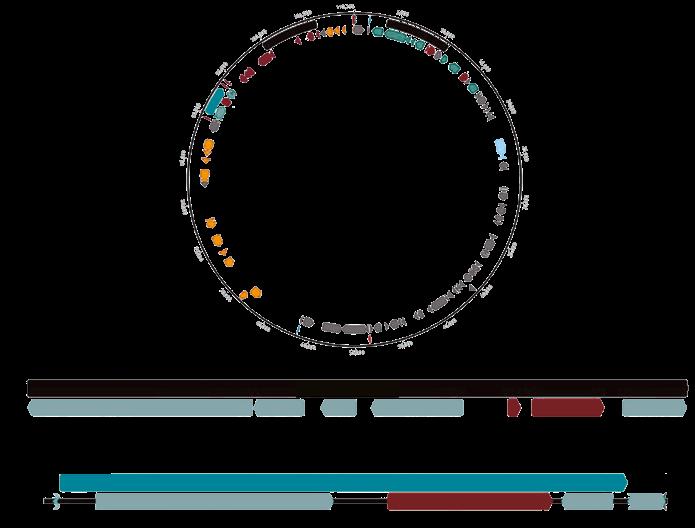
During this period, high transfer rates of CS-resistant E. coli were observed: 2013 2014 2015 2016
86.6% 83.3% 22% 8,5%
establish a GI tract microbiome that is appropriate for optimal pig production and efficiency in the absence of some antimicrobials.
The use of antimicrobials in pig production has evolved from being a tool to improve efficiency and bacterial infections to an increasingly compromised production instrument. The increase in resistance to these compounds, has lead to bans/ reductions in their use.
However, some antimicrobials are recognized as a necessary intervention for veterinary care and the welfare of pigs and therefore it is necessary to preserve their appropriate antimicrobial use.
This situation of change in the use of antimicrobial compounds has become even more crucial since the emergence of RESISTANCE to CIAs in livestock systems around the world. Which highlights the requirement for continous surveillance and genomic characterization of CIA-resistant bacteria to mitigate the spread of AMR in pigs and its potential impact on human health.
Similar to the development of dysbiosis after short-term administration of therapeutic antibiotics, resistant microbes can overpopulate the GI tract after certain prophylactic treatments, resulting in decreased “gut health” and production. Therefore, nutritionists and food manufacturers should be aware of the current rules and regulations on the use of antimicrobials and how this determines the formulation and/or supply of the food. As well as becoming actively involved in projects and conversations in order to confirm the efficacy of nutritional solutions. Obtaining a better understanding of the mechanisms that allow different and appropriate measures to improve animal health and immune status.
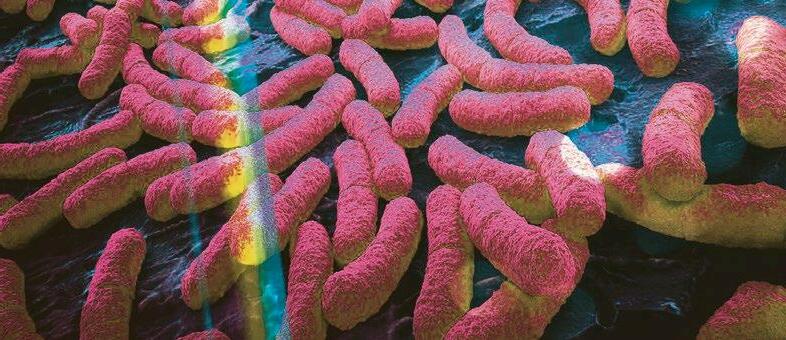
In addition, there must be a greater understanding of socioeconomic factors from the pork producers’s side since they are the ones that take decisions about these nutritionally optimized foods. Therefore it is also crucial for them to listen closely to the advice issued by their trusted experts.
“Gut health” and antimicrobial resistance DOWNLOAD PDF

Stevia presents itself as an interesting natural additive for poultry feed. For many years, research related to bird nutrition has focused on different dietary components that improve productive efficiency and are not expensive, such as antibiotic growth promoters.

These are compounds used for therapeutic purposes to increase the health and welfare of animals, or for prophylactic purposes. Aiming to increase growth range and achieve more efficient conversion rates.
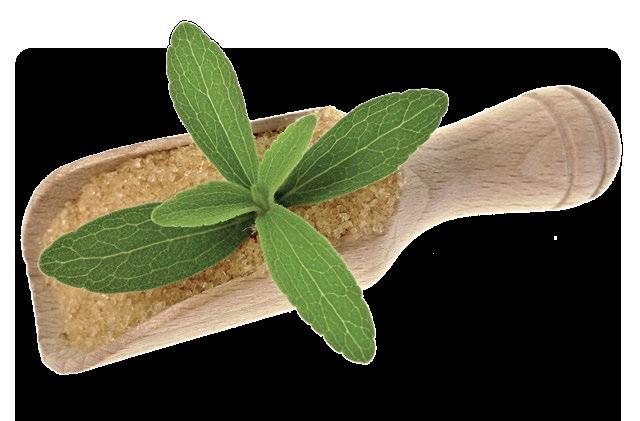
However, due to the emergence of microorganisms resistant to antibiotics and the presence of residues in poultry meat or eggs, their use in animals of productive interest has been restricted.

This has opened the door for additives known as natural growth promoter (NGPs) which generate better productive yields in animals through various mechanisms. Most of which are closely linked to better intestinal health.
This is reflected in the increase in national and international regulations, which have restricted the use of various antibiotic growth promoters (AGPs) (Gaggia et al., 2010; Grashorn, 2010; Huyghebaert et al., 2011; Hong et al., 2012; Allen et al., 2013; Pal et al., 2015; Bauwens, 2016; FAO, 2016; Gaddet et al., 2017)
In this way, natural growth promoters guarantee safety and their residues are eliminated in avian by-products. Which also allows their export in accordance with current legislation (Grashorn, 2010; Hong et al., 2012; Pal et al., 2015; Bauwens, 2016; FAO, 2016; Gaddet et al., 2017).
The aim of this review is to broaden the knowledge about the use of natural growth promoters in poultry production. With a special focus on Stevia, as a possible alternative of natural origin to antibiotic growth promoters.
This, added to consumer demands for antibiotic-free natural products, has pointed research towards new dietary alternatives (Peralta et al., 2008).
For approximately 20 years, numerous investigations have focused on the intestinal health of production animals. Due to the fact that it has been shown to have an intimate relationship with their poductive efficiency.


Intestinal health not only involves the digestive system but also the immune system associated with the intestine and the intestinal microbiota. All of these, interact through different mechanisms, tending to achieve intestinal homeostasis.
Different investigations agree that the interaction of these three elements (digestive system, immune system associated with the intestine and intestinal microbiota) are crucial in the first weeks of life of commercial birds. When the growth and development of the digestive system, and especially the intestine occurs.
Together with this event, in the first weeks of the bird’s life the microbiota colonizes the different portions of the intestine and establishes this interaction with the digestive system and with the immune system associated with the intestine (Bar Shira et al., 2005; Friedman et al., 2005; Peralta et al., 2016).
Immune maturation is the last event that occurs in the first weeks of life. The microbiota and the different components of the bird’s diet are amongst its most important stimuli.
This set of events is translated into greater growth in the first weeks of life due to an improved utilization efficiency of ingested nutrients. Which manifests itself in superior muscle mass production.
Therefore, research related to the different dietary additives of natural origin, which improve intestinal health is essential.
These include:
Probiotics
Prebiotics
Organic acids
Enzymes
Phytogenics


They are natural bioactive components, derived from herbs, spices or plant extracts (essential oils) that: Stimulate feed intake
They have antioxidant, antimicrobial, coccidiostatic, antihelmintic and immunostimulant properties, which translates into an improvement in productive efficiency in birds (Grashorn, 2011; Gadde et al., 2017)
Depending on the process used to extract these bioactive compounds, phytogenics can be classified into essential oils and oleoresins.

The main component of phytogenics are polyphenols; their composition and concentration vary according to the phytogenic that is used:
Part of the plant
Environmental factors
Among the phytogenics commonly used in avian nutrition there is a wide variety of herbs and spices, such as:
Whole seeds or extracts of black cumin (Nigella sativa)
Oregano (Origanum vulgare)
Rosemary (Rosmarinus officinalis)
Salvia (Salvia officinalis)
Thyme (Thymus vulgaris)
Research in poultry farming has also been conducted using:
Essential oils derived from cloves (Syzygium aromaticum)
Cilantro (Coriantrum sativum)
Star anis (Illicium verum)
Ginger (Zingiber oficinale)
Garlic (Allium sativumy)
Time of year in which the vegetable is collected
Storage and processing techniques (Gaddet et al., 2017).
Stevia (Stevia rebaudiana Bertoni)
All have improved the prodcutive efficiency and health of the studied animals. (Grashorn, 2010; Huyghebaert et al., 2011; Hong et al., 2012; Allen et al., 2013; Smet, 2016).
The gut biome is an essential component of animal health. It needs to grow and mature well in order to ensure resilience in the flock. Signis - the first of a new class of additive, stimbiotics - influences biome development delivering a beneficial microbial population. The healthier the biome, the healthier the profits. Find out why Signis is getting so much attention @ www.abvista.com

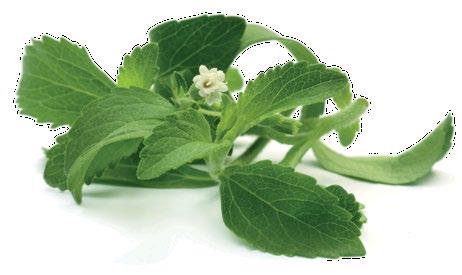

Stevia (Stevia rebaudiana Bertoni), is a perennial plant, native to Paraguay and Brazil, known worldwide for its sweetening properties.
Due to the presence of steviosides and rebaudiosides (steviol glycosides), its leaves are 200 to 300 times sweeter than common cane sugar (Geuns, 2003; Grosso et al., 2012; Christaki et al., 2013)
Both dried Stevia leaves and their bioactive compounds mainly from the leaf, stems and flowers, have been shown to possess other very interesting positive effects, such as antioxidants, anitmicrobial activity, and increased immunity. (Wood et al., 1996; Ghosh et al., 2008; Jayaraman et al., 2008; Christaki et al., 2013; Shivanna et al., 2013; Shukla & Mehta, 2015).
The antibacterial effect of Stevia (either against Gram+ or Gram-) was confirmed through numerous tests using compounds obtained from Stevia leaves (Wood et al., 1996; Geuns, 2003; Ghosh et al., 2008)
These results are very important for poultry production, especially for the colonization of the microbiota in the first weeks of life, avoiding the colonization of pathogenic enterobacteria such as E. coli, S. typhimurium and others. These pathogens produce diseases with high mortality and morbidity rates in adult birds. Resulting in great economic losses. Some of these bacteria are zoonotic agents (Peralta et al., 2017).
In a study with broiler chickens and layers, steviosides were administered (0.6-1.1% via intubation) and no residues were recorded in meat or eggs (Geuns, 2003)
These investigations helped to conclude that Stevia or its extracts can be used without genetically affecting tissues or the deposit of toxic residues in avian products. Due to the fact that it is quickly metabolized by the animal.
In other studies conducted in pigs, Stevia and its bioactive compounds were shown to have antimicrobial properties which could influence the intestinal microbiota possibly altering the activity of some digestive enzymes and their production of short-chain fatty acids.
It could also be inferred that steviosides do not influence the uptake of other essential nutrients such as amino acids, vitamins, minerals, etc. (Geuns et al., 2003).
In addition to the previously mentioned properties, the Stevia plant has other advantages: It is easy to grow Does not require a large space to produce a great number of leaves. The extraction of its compounds does not require great equipment nor is it very expensive (Grosso et al., 2012)
A study was conducted with 15-day-old broiler chickens. It was observed that the administration of 0.13% ground Stevia leaves or 0.13% pure steviosides, for 4 weeks, improved the productive performance of the birds during the first weeks..
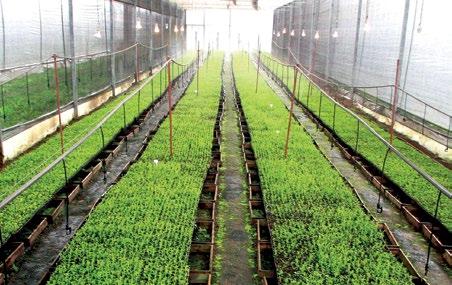


Stevia
However, and in contrast to what was expected, at the end of the trial no changes were detected in the productive efficiency of the broiler chickens. On the contrary, a significant increase in abdominal fat was generated (Atteh et al., 2008; Atteh et al., 2011).
In another study conducted with broiler chickens, the addition of Stevia (00.085%) during the finishing stage did not modify the feed conversion of the evaluated birds (Wood et al., 1996).
young animals. Which does not appear to be the case in adults, or in high doses.
The explanation possibly lies in the analytical composition of the leaves, the part of the plant that is most commonly used.
The leaves (considering their dry weight) contain:
Proteins (100-200 g/Kg-1)
Lipids (30-40g/Kg-1)
Saccharides (350-600 g/Kg-1)

Vitamins (folic acid, C and B2)
Minerals that have very important biological functions (Ca, K, Mn, K, Na, P, among the most remarkable)
The oils extracted from Stevia leaves contain monounsaturated fatty acids, such as oleic acid (43 g/Kg-1) and polyunsaturated acids such as linoleic (90-120 g/Kg-1) and linolenic acid (200-250 g/Kg-1).
In addition, Stevia leaves contain functional saccharides such as fructoligosaccharides like inulin and dietary fibers which have been associated with prebiotic, antioxidant, anti-inflammatory and antimicrobial properties. (Christaki et al., 2013).
The antioxidant properties of this phytogenic are due to the presence of phenols, flavonoids and other compounds such as vitamin C and Zn.
Stevia leaves also contain antinutritional agents such as oxalic acid (23 g/kg-1) and tannins (0.1 mg/ kg-1) (Christaki et al. , 2013), which are undesirable components in bird diets. However they are found in a very low percentage and can be used in the diets of these animals for a short time.
These antinutritional agents present in the leaves or their extracts is probabbly the cause of the negative results observed in farm animals. However, in order to clarify this issue it is important for more research to be done.

May contain anti-nutritional agents
More studies are required
Feed with Stevia
Studies of natural growth promoter (NGPs) that improve intestinal health in the first days of life of birds are fundamental. Since good intestinal health can then manifest itself in the adult bird with an improvement in productive efficiency.
Possibly, the bioactive compounds obtained from Stevia increase intestinal absorption, influence the colonization of the intestinal microbiota and maintain the homeostasis of the intestinal mucosa.
These mechanisms ultimately translate into an optimized use of nutrients, which leads to better productive performance. Taking advantage of the genetic potential of current commercial birds bred in intensive conditions.



Likewise, as it does not leave residues in meat or eggs and it is a natural product, Stevia does not pollute the environment. Which meets the requirements of both current legislation and those of consumers who prefer products that are antiobiotic free.
However, more studies are required, both for finding the appropriate dose, type of bioactive compound and to elucidate the mechanism(s) through which better productive performance is achieved in birds.
Corn is the most common feed ingredient used in poultry nutrition worldwide. Consequently, it is the most common physical and biochemical factor affecting the bird’s intestines after drinking water.

Maize contributes with up to 65% of the metabolizable energy and 20% of crude protein in poultry diets.
Its average nutritional value is wellknown, but the variability in its energy value is a very common issue with a great impact on poultry performance and health.
Poultry professionals can either forget about the sources of corn variability, keep using the same average values, consider corn as a stable commodity, and just deal with the multiple consequences that this variability brings in the final results.

Corn variability affects: feed processing, growth, feed conversion ratio, flock uniformity, digestibility, digesta viscosity, gut microbiota composition, intestinal health, and efficacy of exogenous enzymes
An alternative pathway is to understand better the parameters affected for each factor, determine key indicators, measure them, and generate strategies in corn production and processing that minimize the variability.
We intend to contribute to spreading the understanding of corn variability. This first article on this topic will address recent advances in understanding the:
Variability in corn composition
Physicochemical properties
Effects of thermal processing in corn grinding
This information was partially presented at the Arkansas Nutrition Conference in September 2021.
In animal nutrition, yellow dent corn tends to be categorized by:
Test weight per bushel
Physical appearance
Crude protein content
Proximate analyses are used to estimate its energy values
However, the accuracy of estimating those energy values for feed formulation is not always satisfactory due to the:
Variability in nutrient and antinutrient content
The grain’s physical properties
The interactions among these factors
Consequently, the apparent Metabolizable Energy corrected by nitrogen (AMEn) may vary by more than 400 kcal/kg.
The content of all nutrients or their availability to generate energy could be variable in corn depending on: genetics, soils, water availability, environmental conditions, moisture level at harvest, drying temperatures, storage conditions post-harvest, time of storage, and particle size

Variability is part of nature, and there is an inevitable proportion impossible to control. For example, recently, Diego Melo Duran, in his Ph.D. dissertation from the Autonomous University of Barcelona in Spain, concluded that “the position of the kernel in the cob cause variation in the nutrient and non-starch polysaccharides (NSP) content of the grain.”
LOWER
and lower:

NSP and soluble arabinose to xylose (AX) ratios than the grains produced in the 23% apical portion of the cob. HIGHER
Kernels in the basal portion of the cobs have higher contents of crude protein, starch, and AME
This effect of position in the cob varies with genetic varieties. and the location of the plantation also interact, generating more variation in all nutrient composition.
However, NSP has great variability among maize genotypes.
In Dr. Melo Duran’s studies, the:
Total NSP ranged from 55.6-81.3 g/kg
Soluble NSP ranged from 1.0 to 8.5 g/kg
Total AX ranged from 38.8 to 50.0 g/kg
Soluble AX ranged from 2.2 to 5.3 g/kg
The soluble AX of some maize varieties could be similar to wheat promoting digesta and excreta viscosity issues. On the other hand, some corn varieties have less nutrient and NSP content variability.
Consequently, a long-term goal could be to use corn breeding and genetic selection to minimize this variability in corn nutritional value.

The variation in corn crude protein is close to 5 percentage points from 8 to 13%, but more important is the variation in zein content, the main corn protein.
starch that vary in physical structure and properties.
The AM: AP ratios vary with genetics, the interaction between moisture at harvest and the drying temperatures, and storage time.

Amylopectin is digested better than amylose because the latest can form a very compact physical structure that inhibits digestion.

Protein and starch content and their properties interact, affecting the hardness or vitreousness of the endosperm kernel and the protein solubility.
Maize vitreousness, the ratio of hard to soft endosperm, is related to starch properties and zein content and highly correlated (r = 0.87) with kernel density and, consequently, with corn harvest yields.
Then, there is a slight tendency to use harder endosperm varieties to produce corn for feeding animals. But this agronomic preference has consequences for the animal industry.
More vitreous corn has higher amylose and zein content, and its starch granules are smaller and circular.
However, the zein content and its interactions with starch contribute more to vitreousness properties than starch molecular properties.
Corn with high vitreousness generally has 20 to 30% higher phytate content.
High vitreousness is correlated with reduced nutritional value for poultry. But the response may vary depending on many factors, especially corn genetics.
Then vitreousness cannot be considered the best parameter for nutritional quality for poultry but plays a role in nutrient quality.
Another marker of corn nutritional value is the extractable salt-soluble protein content or protein solubility index (PSI) in 0.5M NaCl.
This test is a laboratory methodology used in France and many parts of the world to evaluate corn quality.
Drying corn to 15-13% is necessary to store corn and avoid microbial degradation.
Most of the time, corn is exposed for a few minutes or seconds at temperatures between 245 to 284 oF (115 to 140 oC). These elevated temperatures during drying interact with corn moisture at harvest.
Drying may occur naturally on the field at around 30 to 35 oC (86 - 95 oF), but more frequently has to be done with hot air industrial dryers at temperatures higher than 100 oC (> 212 oF).
Kernels have an average of 35% moisture at maturity.
Harvest generally starts when corn moisture has reduced to 24-22%, but due to climate change and extreme weather conditions, harvesting corn earlier with higher kernel moisture is becoming prevalent.
Climate change is increasing the earlier harvest with higher moisture content.
The
Dr.
The thermal denaturation of corn proteins reduces the PSI, especially when harvested at high moisture.
The higher the initial moisture, the bigger the negative impact of physicochemical changes in corn starch and protein.
The standard French Promatest method NF-V03-741 (AFNOR, 2008) can be used to determine PSI, and these values can be estimated with NIRS. PSI varies 20% among corn samples from different locations. Melo-Duran (2021) indicated a high (r =0.83) positive correlation between PSI and AME predicted by NIRS.
Our studies at NC State University have indicated that drying corn at 120 oC can cause more amylose within starch (25.5%) than drying at 35 oC (21.5%) and increases the starch gelatinization linearly without observing significant differences among the drying temperatures evaluated. The increment in amylose content due to high drying temperature (120 oC) in hard endosperm kernels was twice (21.3 to 26.7%) as much as the one observed in kernels with average endosperm (21.7 to 24.2 %).


In experiments conducted in my lab, we concluded that:
Hot air-drying at either 80 or 120 oC decreased:
Vitreousness
PSI
Increased damaged starch
Total and insoluble NSP
Total and insoluble arabinoxylans
The previous observations are just a few of the multiple impacts of drying temperatures in corn of different
Increasing the AX compared to drying at 35 oC in a commercial corn hybrid with lower vitreousness (61.98 %)
However, when corn kernels with harder endosperm (63.61% vitreousness) were dried, no changes in vitreousness, PSI, and NSPs due to drying temperature were observed.

In the harder endosperm, higher drying temperatures decreased the content of damaged starch and increased the AX compared to drying at 35 oC.
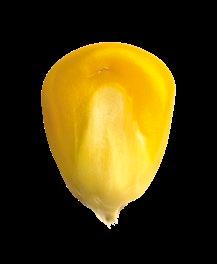
Damaged starch is a valuable parameter for assessing the quality of flours.
It refers to the portion of kernel starch that has been physically broken or fragmented during wheat milling making it more susceptible to digestion.
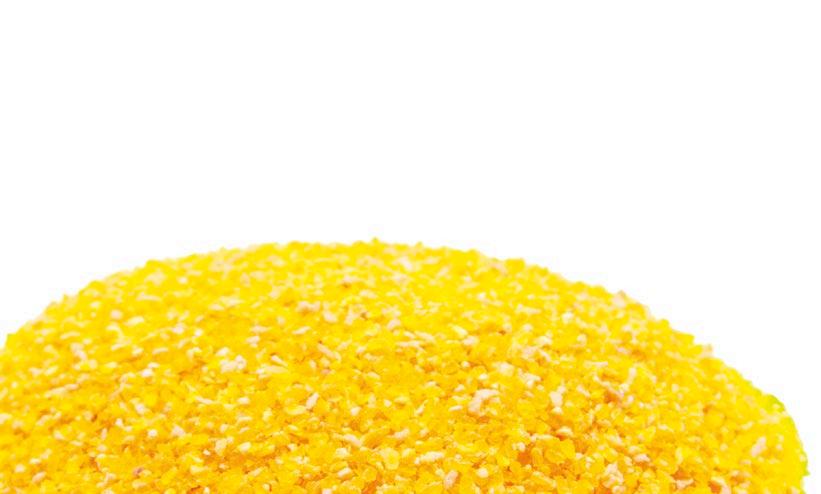
Damaged starch increases water absorption capacity and susceptibility to erosion by endogenous alfa-amylase, ultimately increasing starch digestion. The changes observed in chemical components had effects on the breakage susceptibility of corn kernels during harvest and grinding at the feed mill.
1,050 1,100 1,150 1,200 1,250 1,300 1,350 1,400 cd
We observed interactive effects of corn variety and drying temperature on: the geometric mean of particle size (dgw) (Figure 1) and in its distribution or variability expressed as the standard deviation of the particle size (Sgw) (Figure 2) after milling in a hammer and roller grinders.
The dgw was positively correlated (r = 0.69) with amylopectin and negatively correlated with AM:AP (r = -0.68) and damaged starch (r = - 0.65).
On the other side, the storage time decreased: the dgw, because some biochemical changes occur during storage additionally, the pellet durability index was better for diets with average kernel hardness and corn dried at 35oC than higher temperatures.
a
ab bc d cd
750
700
650
800 b c c
600
550
900 rpm 500
P a r ticle si z e ( μ m) 80 C 35 C 120 C
b
a d
nutrition
3,600 rpm
600 d
550
500
450
P a r ticle si z e ( μ m) 80 C 35 C 120 C
2,400 rpm Average kernet (DKC 68-05) Hard kernel (DKC 65-20)
a nutriNews International November 2022 | Understanding corn variability: Part I
400
Figure 1. Effect of kernel hardness and drying temperature on particle size (Dgw) in a hammermill at 12-12 screen (4.76 mm) with 900, 2,400, and 3,600 rpm (NC State University research).
b c d d 67
68-05)

(DKC 65-20)
Figure 3. Effect of corn kernel hardness (average and hard) and drying temperature (35, 80, and 120 oC) on FCR at 40 d. Means not sharing a common superscript (a-c) are significantly different (n=8; P < 0.01) by Tukey’s test (NC State University research). nutrition


• A unique solution combining the benefits of valeric acid and butyric acid
• Supports and improves animal performance • Supplement naturally occurring organic acids that strengthen gut integrity
 Fernando Bacha Baz Nacoop, S.A.
Fernando Bacha Baz Nacoop, S.A.

Exogenous enzymes are widely used, with basic purposes like:

Increasing the capacity to use nutrients contained in raw materials
Eliminate anti-nutritional factors from feed.
Currently, the use of phytases and carbohydrases covers practically all monogastric feed in intensive farms.

Louis Pasteur concluded in his work, that fermentation is catalyzed by enzymes.



The history of enzyme research is closely linked to the history of biochemistry, the first time the term “enzyme” (from the Greek yeast) was used was in 1876 and it is attributed to the German physiologist Wilhelm Fiedrich Kühne.




The first enzyme, cannavalia enzyformis bean Ureasa, is crystallized.
The prolific author of the theory of the origin of life together with Oparin, John Burdon Sanderson Haldane in his treatise “Enzymes” wrote:: “Interactions by weak bonds, between the enzyme and its substrate, could be catalysts of a reaction” this idea is the center of our current knowledge about the action mechanisms of enzymes.
Regarding the use of enzymes in ruminants, in 1960 Wise Burroughs’ team at “Iowa State University”, published the use of an enzyme conjugate belonging to MSD (Merck, Sharp & Dohme) Agro-Zyme in calf diets.
Already in this first article on the use of enzymes in ruminant diets, there are interesting results:
Increases in average daily gain and conversion are not associated with improved digestibility of dry matter, organic matter, protein or cellulose in diets supplemented with the enzyme
Subsequent work showed that supplementation with cellulases or xylanases (Fibrolytic) can improve rumen digestibility. This changes the site where nutrients are used which improves energy efficiency.
Some of the reasons that justify the use of enzymes in ruminants are:
The digestibility of organic matter in ruminants rarely exceeds 90%
More and more agroindustrial byproducts of low quality are commonly used
The faster availability of carbohydrates which normally stimulates microbial population growth
The presence of different sized polysaccharides can have a prebiotic effect
The use of exogenous enzymes can cause effects of multifactorial origin. In summary, what is sought in an enzyme is that it improves the use of nutrients or that it can change the site where nutrients are broken down and used by the animal..
At a first glance and in a simplistic manner it seems clear that exogenous enzymes should be used in ruminants since they increase the use of fibrous parts and ruminal utilization (Figure 1).
Batch of high production adult cows
High production first lactation batch
Low production
Single TMR batch Empty cows
Example
Produce more or cheaper, or both:
In an interview granted to Galician media the Director of Agriculture and Natural Resources of the University of South Dakota (USA) Alvaro García indicated:
The digestibility of forage fiber determines the profitability of livestock.
There are several alternatives to achieve this:
Selection of grains and forages of higher nutritional value
Improve the degradation capacity of the rumen microbiota
Use of additives that modify the pattern of rumen fermentation
Development of more efficient feeding practices
The use of unconventional feed ingredients
Use of chemical or biological treatments in fodder
Use of exogenous enzymes to increase the digestibility of cell walls and/or starch (Rojo-Rubio et al. 2007).
In ruminants, the enzymes used must have the characteristics of any such product being marketed as:
Appropriate amounts of coenzymes
Cofactors and activators to optimize activities
Have a composition that does not vary by batch
Be thermostable under manufacturing processes
Be totally safe
And in addition, they must also improve:
The digestibility of neutral detergent fiber (NDF)
Be resistant to degradation by rumen microorganisms.
Be in liquid form or dissolve quickly in water because the ruminal enviornment is liquid.
Once it was clear that the use of enzymes in ruminants can be economically attractive, it was necessary to determine in which part of the diet was it most suitable to use these compounds and in which portion of the gastrointestinal tract must they make their effect….


Already from the first trial carried out in 1960, a fibrolytic enzyme that acted in the rumen was used (Figure 2)
Lignin Cellulose Cellulose
Physical Chemical Biological Enzymatic
Hemicellulose
As there were still no products designed specifically for ruminants, enzymes designed for other industries such as paper, textiles, fuels and even fine chemistry began to be used. Although the most commonly used, are those aimed at improving silage.
Products that still retain their enzymatic activity in a residual way are also marketed. In these cases the commercial product also contains the

Lignolytic enzymes are obtained from basidiomycetes (fungi). A wood fungi that oxidizes both phenolic and non-phenolic compounds. Tests have been carried out in lambs with these types of enzymes at an increasing dose. Obtaining increases in ingestion and digestibility. The latter had a quadratic effect in the diet which is difficult to explain.
Table 1. Lignolytic enzymes- Performance of lambs consuming a high forage diet including increasing enzyme doses
LE (mL kg1 DM) P Value
0 60 120 SEM Linear Quadratic
Initial weight, kg 20,0 19,9 20 2,06
Final weight, kg 32,3 34,1 34,1 2,34 0,58 0,75
Average daily weight gain, g/d 211d 244c 243c 0,01 0,08 0,25
Feed conversion 6,2 5,6 5,8 0,39 0,52 0,44
Dry matter 48,9b 58,5a 48,8b 3,4 0,97 0,03 49,9 38,3 4,1 0,96 0,37 57,8a 39,0b 3,3 0,41 0,009 48,0a 18,4b 4,2 0,02 0,006 60,6 50,3 3,6 0,42 0,07
Averages with a different letter on the same line have a significangt difference (P<0,05)
Averages with a different letter on the same line have a significant diffrence (P<0,10)
Fibrolytic enzymes, in general, should increase:
The digestibility of dry matter and fiber
The production of volatile fatty acids, thus decreasing rumen pH, microbial protein synthesis
And ruminal activity
However they also:
Increase methane production
And, according to published articles, there are no changes in the acetate and butyrate proportion in the rumen.
Alpha-amylase enzymes for dairy cow feeding are a radical innovation in dairy cattle nutrition. They can especially be used as a new approach to maximize starch use and fiber digestion (Figure 4).
These enzymes work at the rumen level, improving starch hydrolysis by catalyzing the reaction to convert starch into oligosaccharides in the rumen without compromising pH (Bach, 2011).
Oligosaccharides can be used as:
NDF digestibility amylase rumen
Starch
Oligosaccharides
Oligosaccharides are molecules constituted by the union of 2 to 10 cyclic monosaccharides, they can be linear or branched by glycosidic-type bonds.
Small intestine
Oligosaccharides can be used as an energy source
Fiber digestion time can be reduced when fibrolytic microorganisms have more available energy.
Figure 5. Definition of amylase activity
Amylase maltose maltotriose limit α- dextrins α-1-4 bond “digestible”
Amylase breaks down starch into malto-oligosaccharides. These malto-oligosaccharides stimulate the growth of cellolitic rumen bacteria that degrade fiber This is the cross-feeding effect
amylase
α-1-6 bond “undigestible” reticulum-rumen
malt-oligosaccharides
Stimulation
It has been shown that they practically double the rumen degradation rate of starch and fiber (NDF). Therefore, organic matter increases activity in the rumen, which means an overall improvement in the total digestibility of the ration (Figure 5). Bibliography is available upon request to the author
The results obtained suggest that the release of starch energy provides more energy to cows and increases the digestion of forages.
As a result, cows are able to make a more efficient use of the total ration. Which as a result optimizes feed costs, milk production yields, efficiency and quality. (Figure 6)
Figure 6. Meta-analysis of 16 tests in different countries with the incorporation of α-amylase
AVERAGE: 1,95 SD. 1,43 Max. 4,4 Min: -0,8
Exogenous enzymes: their use in dairy cows
Germany Vargas-Rodriguez, USA CO Field I, USA CO Field II, USA
1,3 0,9 -1 0 1 2 3 4 5
Bibliography is available upon request to the author
DOWNLOAD THE PDF
|
Exogenous enzymes: their use in dairy cows
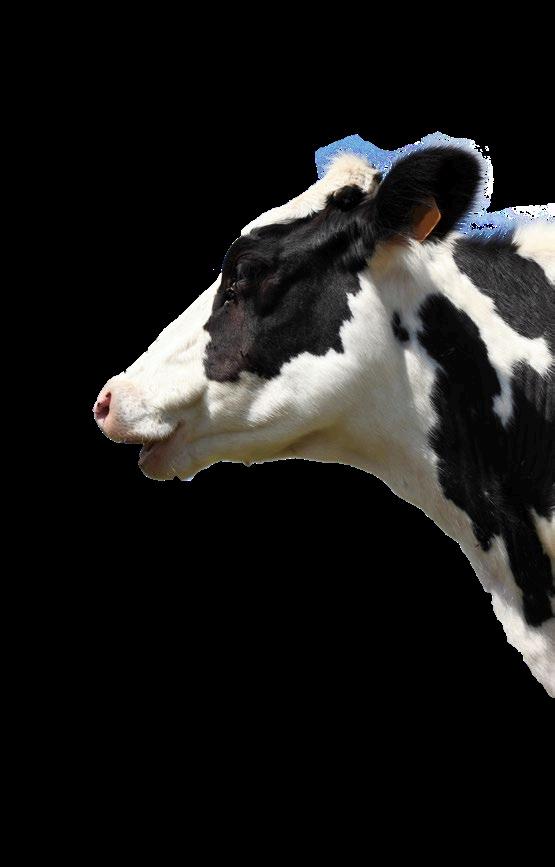
animal husbandry and livestock management is back with an international platform, offering innovative approaches that contribute to enhance adaptations in a world under constant change.







Afterwards, Ines Rathke, Eurotier Project Manager (DLG), made a general overview of the 2022 event and Prof. Heinz Bernhardt, listed the nominees for the Eurotier awards.



Making it worth mentioning that from 150 world-premieres submitted for the “Innovation Award EuroTier”, an independent panel of experts selected 18 innovations for an award. Presenting 4 gold and 14 silver medals
Many of these innovations reflect the trends for sustainable, modern animal husbandry in all regions of the world. Shaping the future and contributing to the improvement of animal welfare and working conditions on the farm.
After these presentations, the media had the opportunity to speak with the attending companies from the agricultural sector. Getting firsthand information on all the updates and innovations that will be presented at EUROTIER 2022.

During this time nutriNews International had the chance to speak with several Feed and Additives companies and learn about their most recent developments: BIOCHEM, a German company with extended presence worldwide, had several news prepared for us:
The opening of a New Production Plant in Lohne (Germany).
In regards to their presence within the feed sector, they announced the presentation of their new and improved Bimulac Weaner® now with TechnoSpore.
The release of Prebican® and Prebimmune® formulated to support the immune and digestive health of dogs and cats.
Photo 2. Prof. Heinz Bernhardt, listed the nominees for the Eurotier awards.BEWITAL agri was also there to present their two most recent developments. Research and Development Manager, Dr. Michaek Hovenjürgen, gave us a thorough explanation of both of these products:

BEWI-SAN Digest: a dietetic feed for consumption at early stages and to support physiological digestion in piglets.
BEWI-FATRIX LM 101: a proven matrixencapsulated combination of methionine and lysine for dairy cows.


BONILAIT, a French company, presented its new product:
HEAT STRESS control: Designed to combat heat stress which is a major issue in livestock farms.
DIAMOND V by Cargill. A new methane reducing feed product called Silvair. This product also offers an alternative source of dietary protein and calcium.
MIAVIT on their part, presented their new MIAROM Intest to us. A product containing selected botanicals that contribute to microbiota modulation and profitable production.
VILOFOSS was one of the companies that presented the greatest number of products at the conference. Amongst which, its product called E-Force, was one of the winners of the silver medal from the Innovation Awards. This product is a new feed supplement that contributes to enhancing animals’ Vitamin E status.

Congratulations to VILOFOSS for receiving such recognition!
After this opportunity to meet some of the exhibitors and learn about their unique range of products the nutriNews International team is looking forward to taking part in EuroTier 2022
nutriNews will be live at the Eurotier exhibition grounds, covering trend-setting developments within the agricultural sector, and sharing with all of those who wish to come visit us at our booth (Hall 19/20, Booth A39), where we hope you get to enjoy our media offer and our international launch!
DOSTOFARM presented its DOSTO Oregano to us. A spice that has become a feed additive in modern animal husbandry. With its 100% Organic certification guaranteed.
A long awaited Eurotier!
DOWNLOAD THE PDF
We will see you there!
YELA PROSECURE is a specifically designed hydrolyzed yeast. Produced with a controlled hydrolysis process ensuring a consistent product composition, YELA PROSECURE offers highly digestible and functional nutrients that support animal performance, digestive care and feed palatability while contributing to the feed protein balance.
